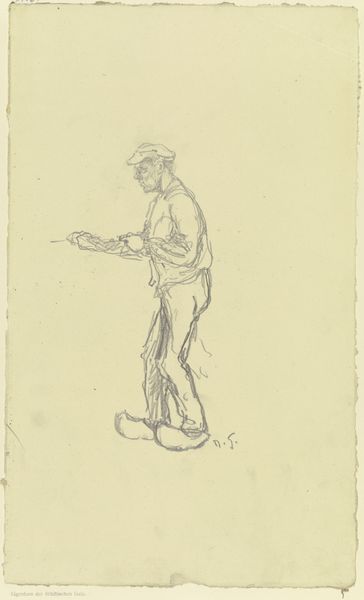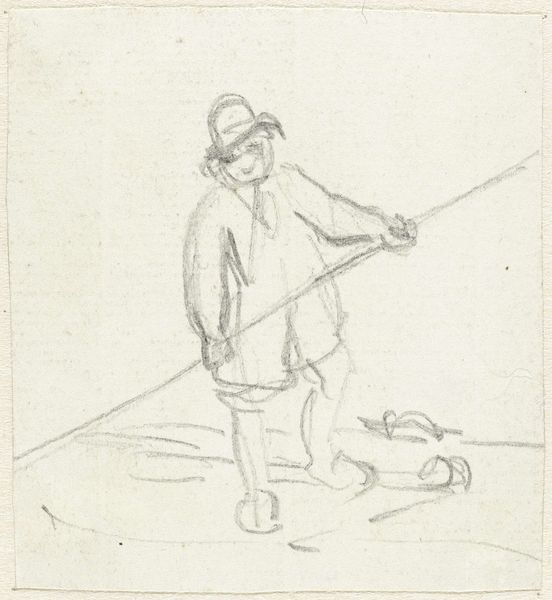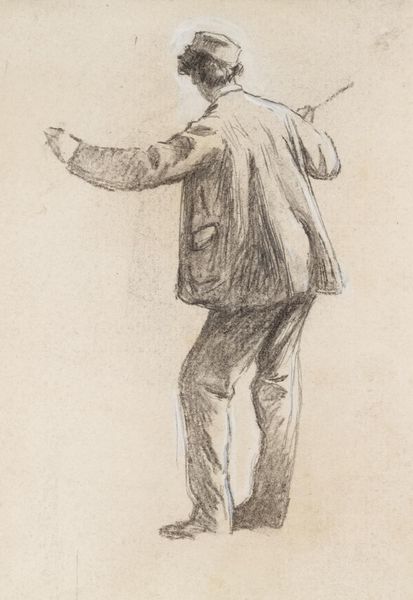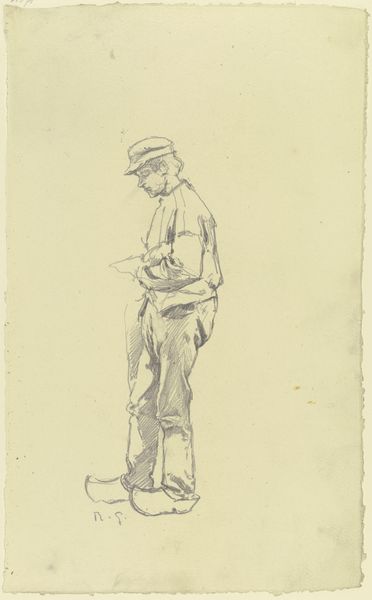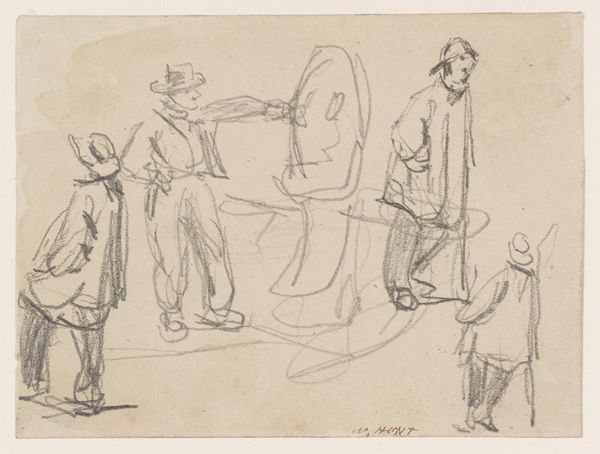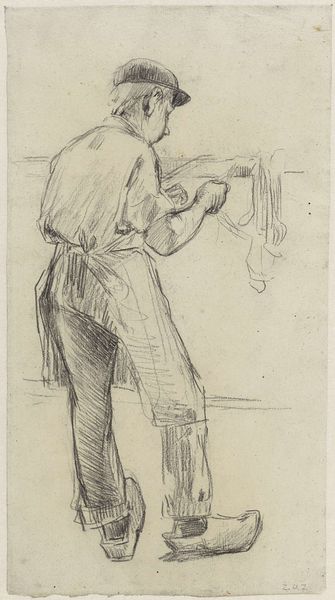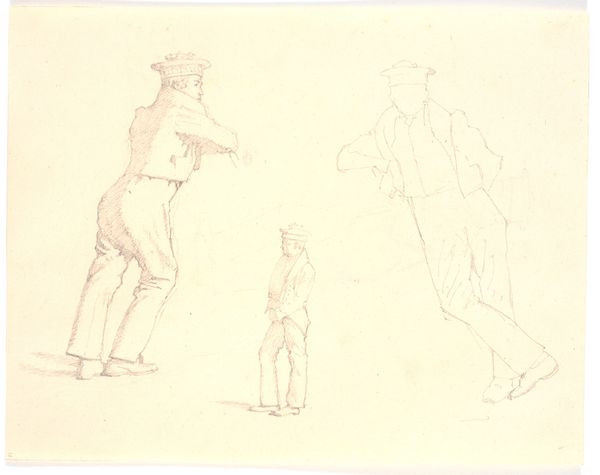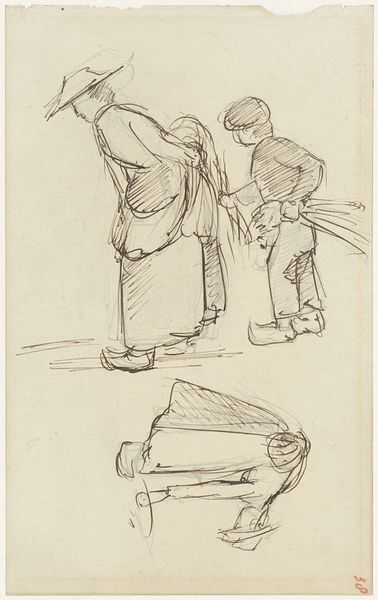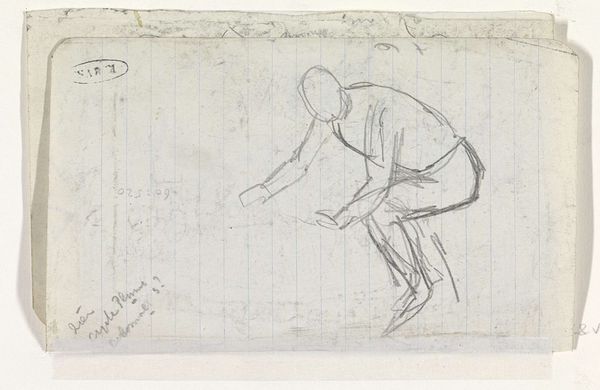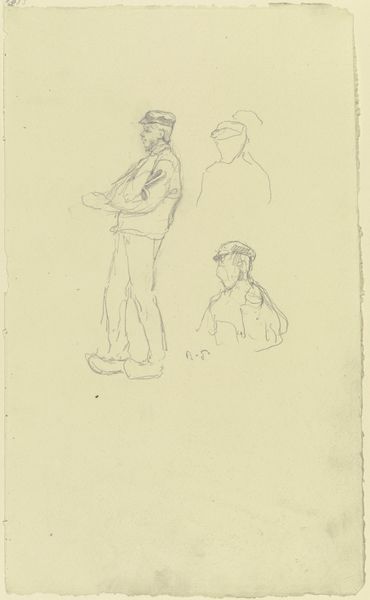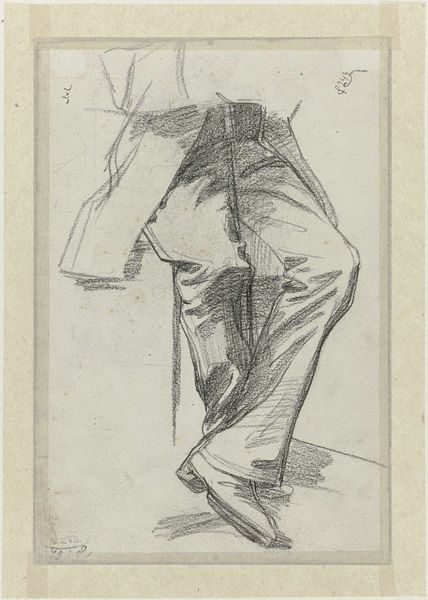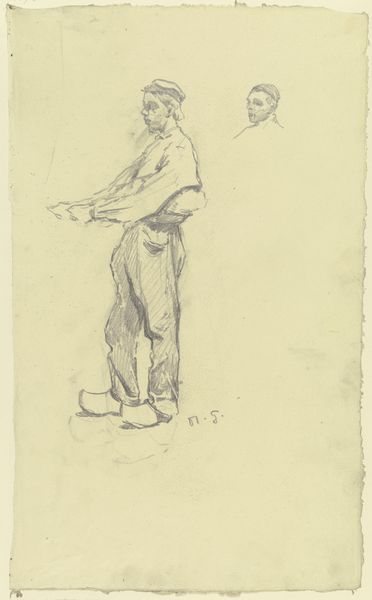
Manden der bøjer sig over hjortekiddet og peger mod en hund 1858
0:00
0:00
drawing, pencil
#
drawing
#
landscape
#
figuration
#
pencil
Dimensions: 108 mm (height) x 193 mm (width) (bladmaal)
Curator: P.C. Skovgaard's 1858 drawing, rendered in pencil, is titled "Manden der bøjer sig over hjortekiddet og peger mod en hund"—or, "The man who bends over the fawn and points towards a dog." It resides here at the SMK, Statens Museum for Kunst. Editor: There’s a delightful immediacy to this work. It has a sketch-like quality that lends itself well to the emotional nuance of the subject. Curator: Indeed, it captures a very specific moment in the ongoing negotiation between humans, animals, and nature, which became increasingly fraught during this period of accelerating industrialization and urbanization in Denmark. Editor: Observe the deliberate rendering of the man—solid, substantial, leaning forward with intent. Then, juxtapose it with the ethereality of the fawn and dog, both lightly sketched, almost spectral. Is it about control versus nature? Or a harmonious link between humanity, wildlife, and the landscape that hosts them? Curator: Perhaps Skovgaard meant to evoke this very ambiguity. His art was profoundly tied to notions of national identity, particularly through his landscapes that highlighted specific regions, like Zealand, as crucial to the formation of Danish cultural memory. The fawn and the dog, within that understanding, represent the natural world Skovgaard sought to integrate into the national narrative. Editor: I appreciate the contrast you describe. Look at the composition itself; the heavy use of lines in the human figure guides your eye around it, creating a sense of activity and direction. Yet, as you've articulated, the dog and fawn act almost as suggestions that invite your imagination to complete them. Curator: His works were collected during his life, securing his position within a canon, making his images crucial visual documents for Danes negotiating modernity. Editor: His expert line work draws the eye, making what seems so simple become deceptively engaging, doesn’t it? Curator: It certainly is that, yes, capturing the public's imagination back then, too, reflecting the era's societal shifts in an approachable yet impactful visual language. Editor: A simple sketch, charged with so much tension and dynamism. I find this dialogue between realism and dreamlike presence very compelling.
Comments
No comments
Be the first to comment and join the conversation on the ultimate creative platform.
